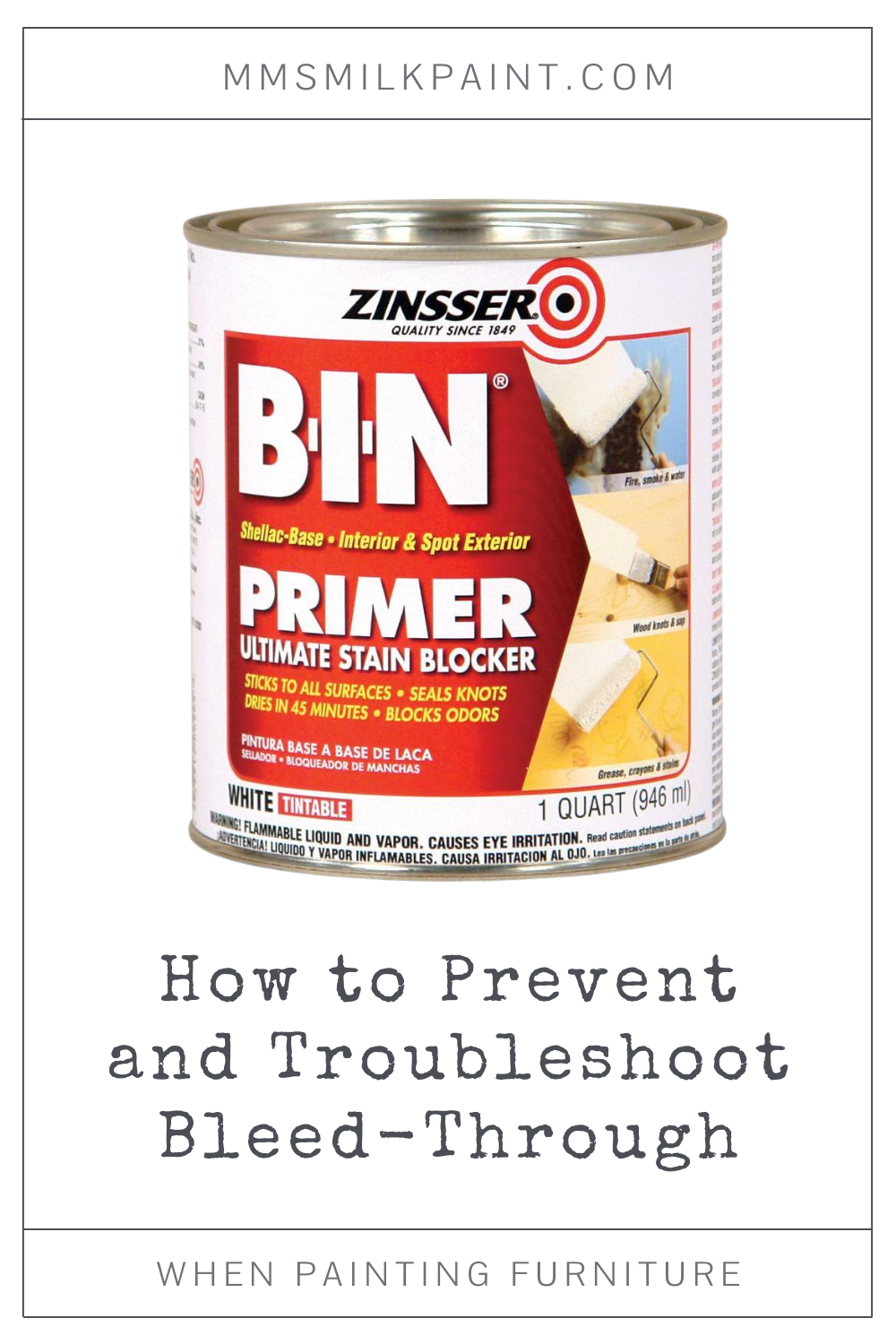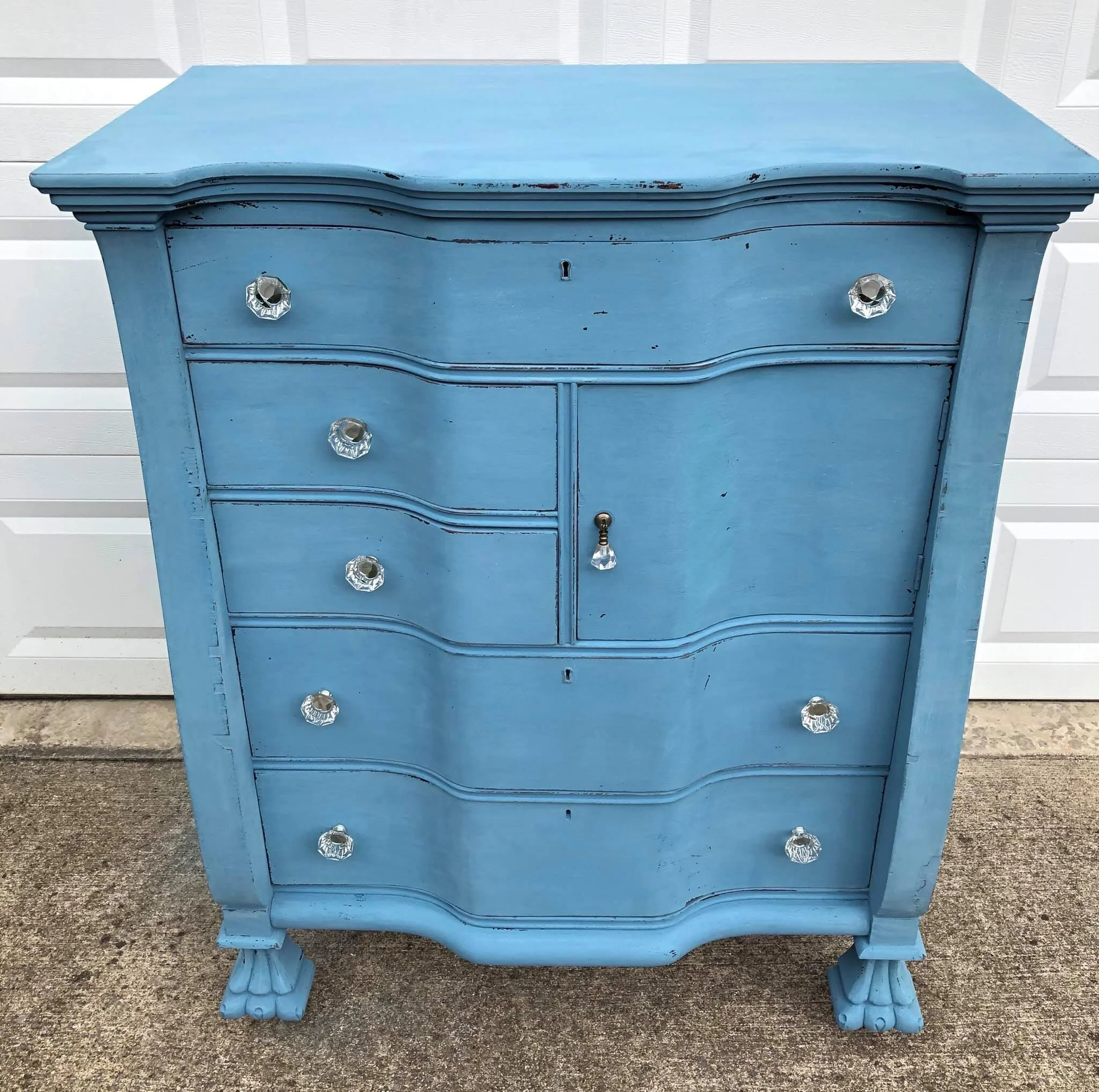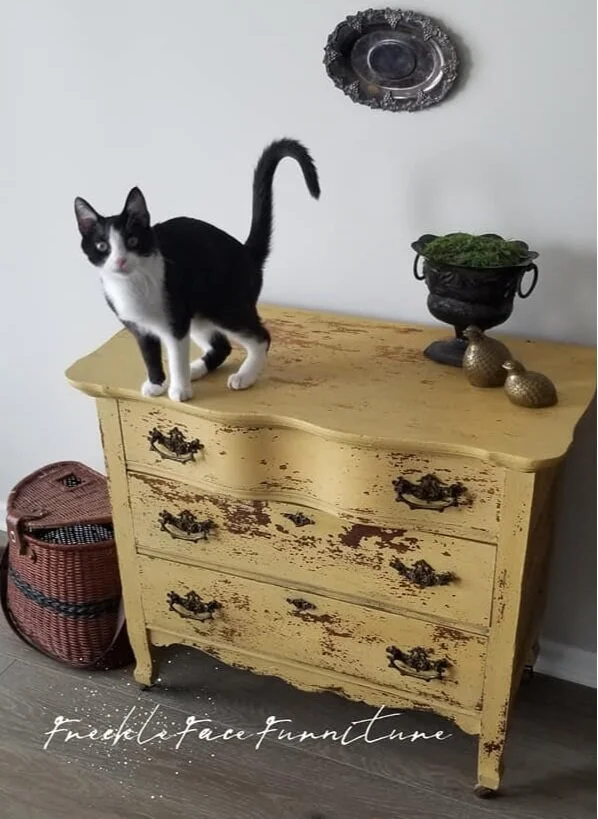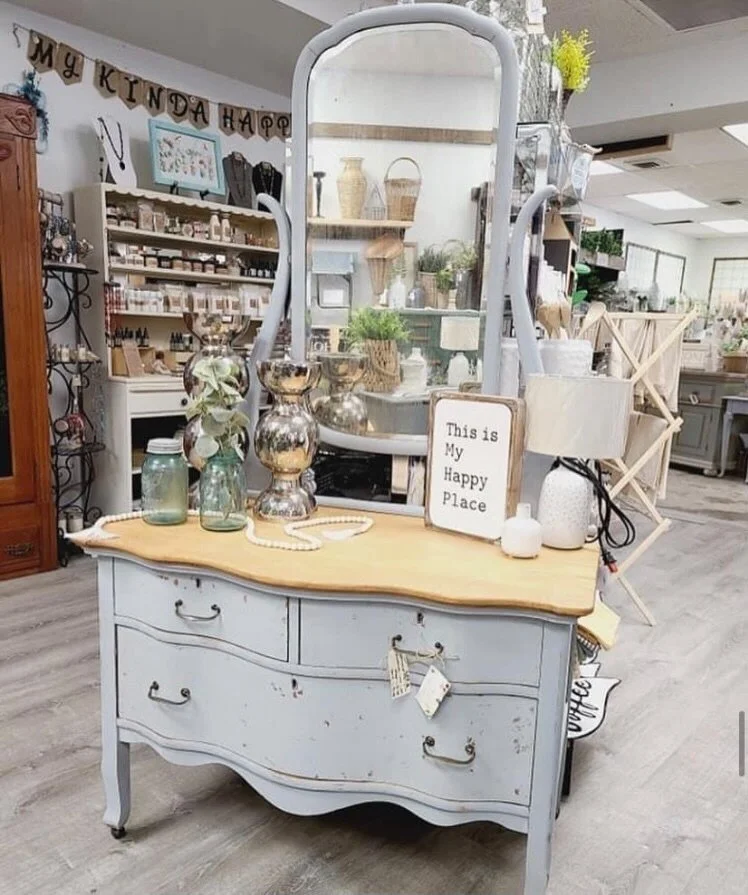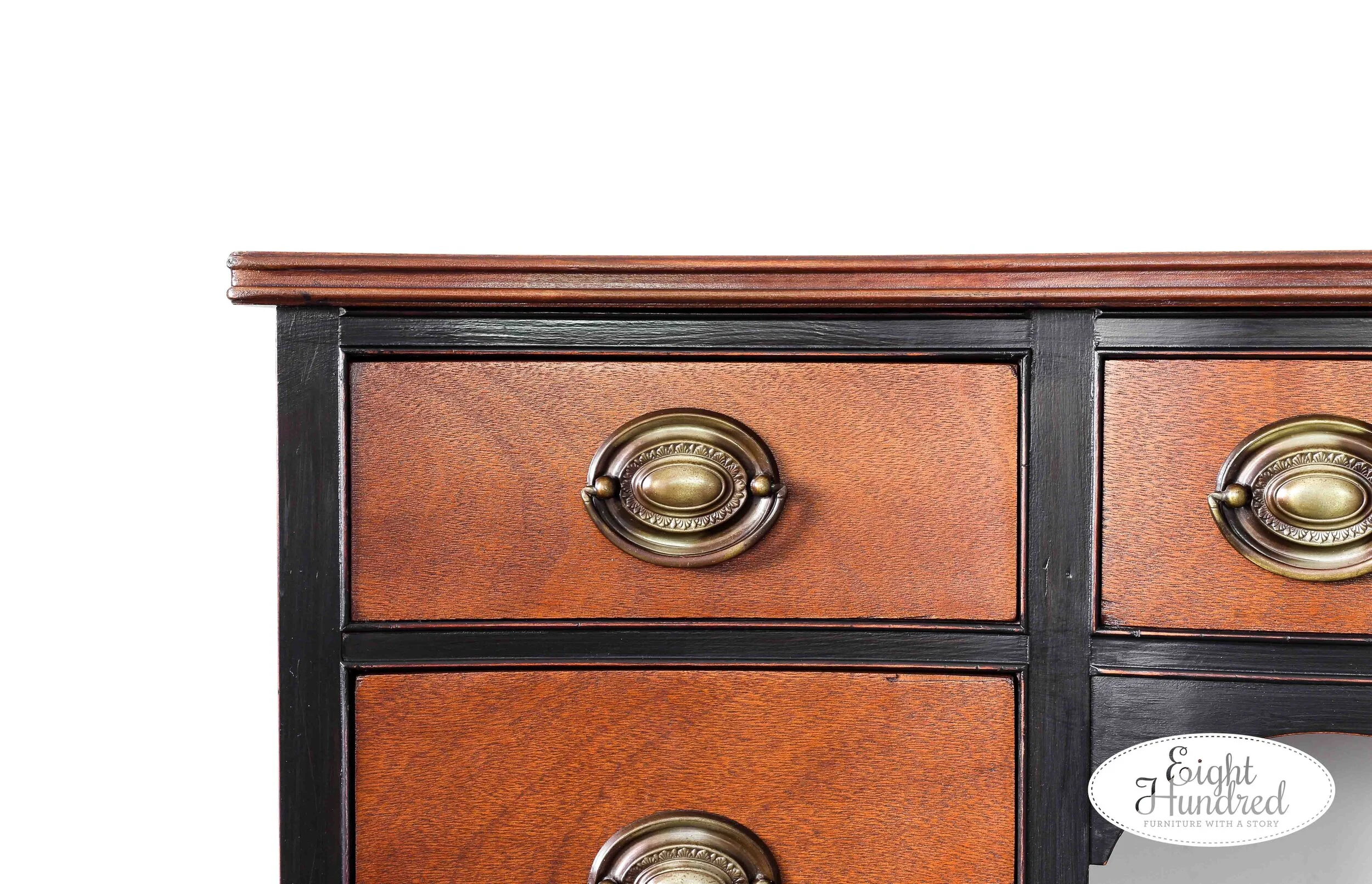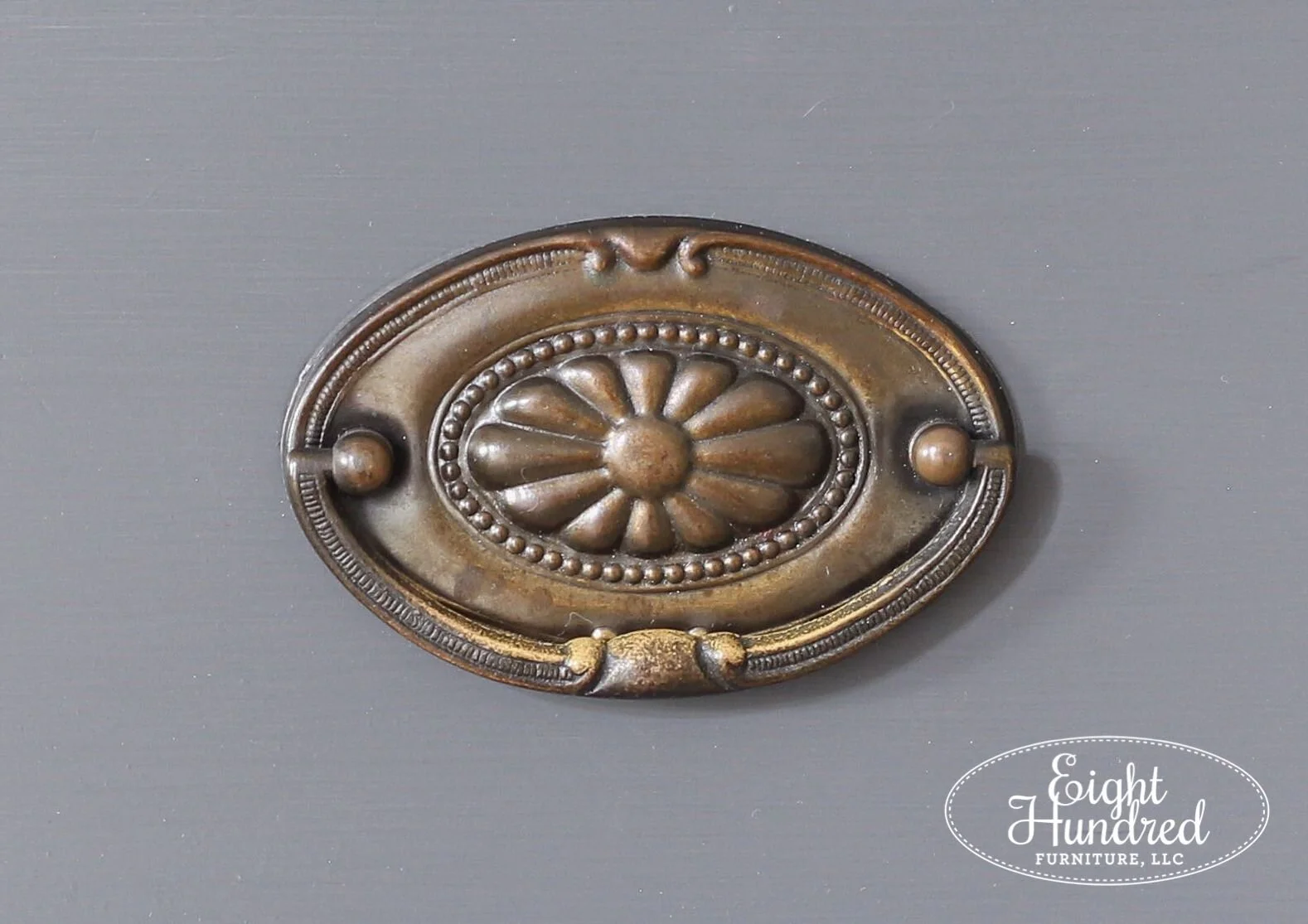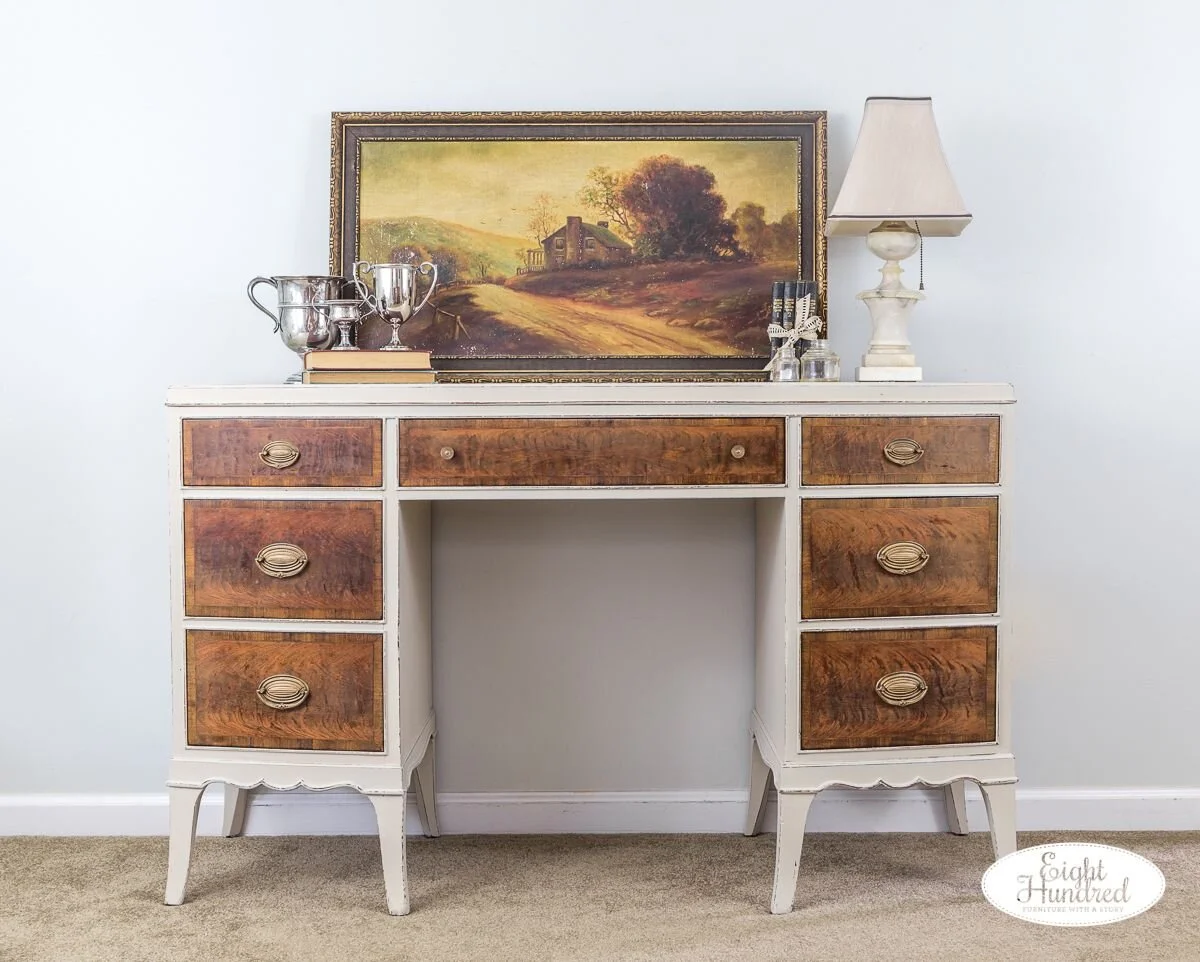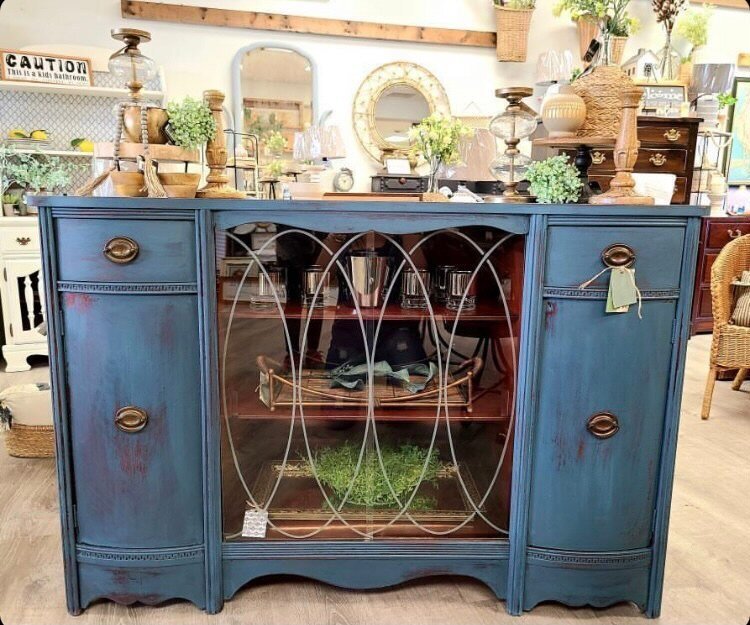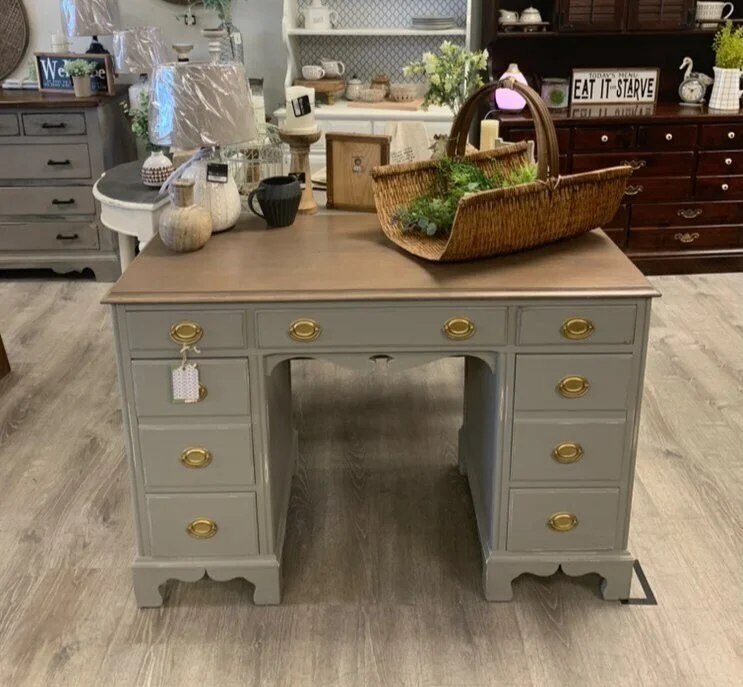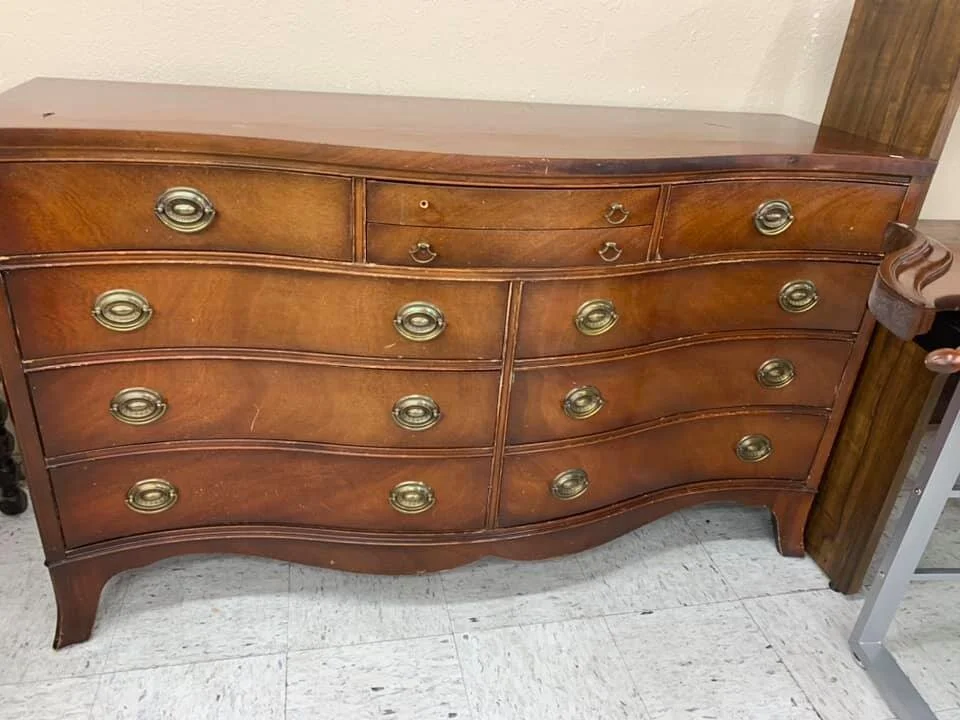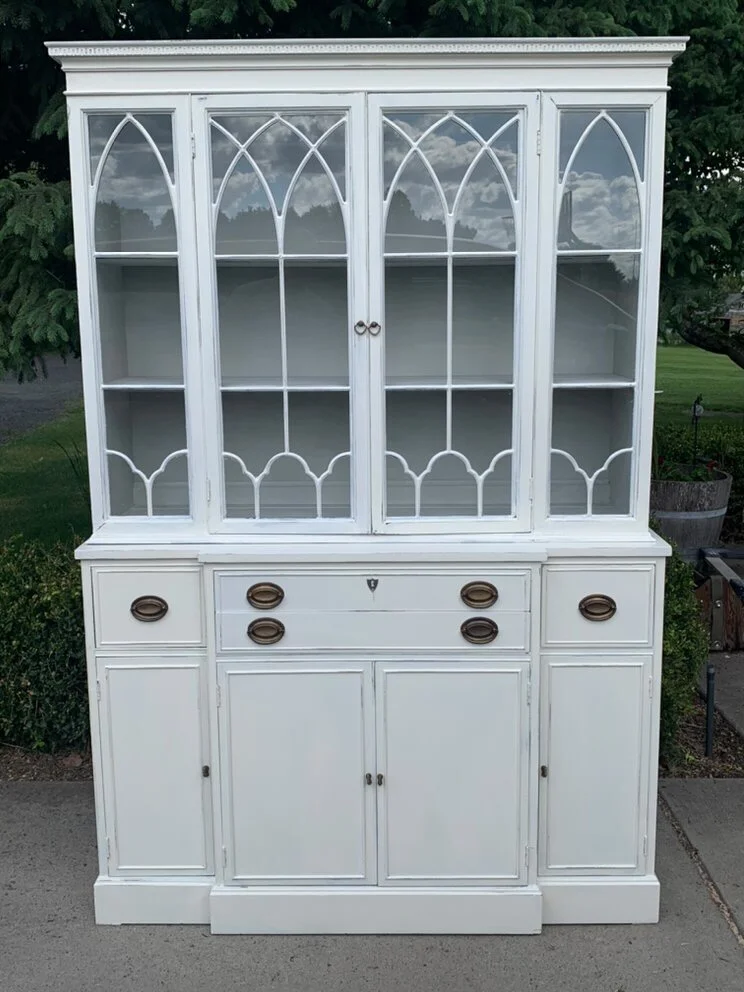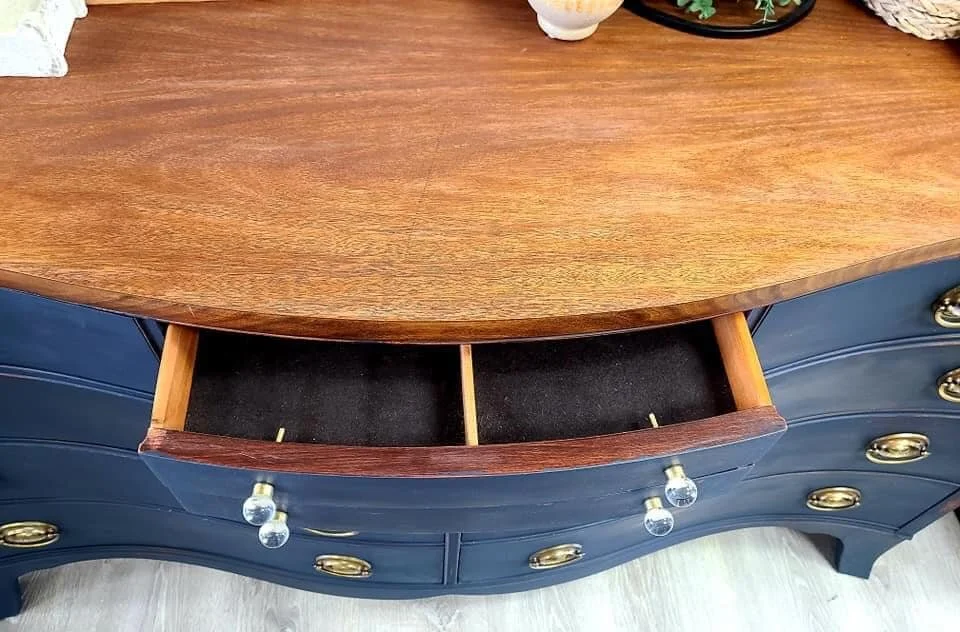Antique Hepplewhite Buffet in Artissimo
Every Friday, we like to select a popular refinished piece of furniture from our Move Mountains with Milk Paint Facebook Group. (We’d love to have you join the fun by clicking here!)
This week, we’ve chosen to highlight this incredible antique Hepplewhite style buffet by Tammy of Farmhouse Fixup. Not only are we going to walk you through her refinishing process, but we’re going to give you a quick lesson in furniture characteristics so you can appreciate them on your next thrifting trip!
Prep Work is the Best Work!
Whenever you’re embarking on a furniture refinishing project, you should prep clean and sand it. It’s tempting to skip this step, but the 5-10 minutes you spend prepping can save you hours of troubleshooting down the line in your refinishing project. An ounce of prevention is worth a pound of cure!
Prep Cleaning
If your piece is extra dirty (like just-got-pulled-out-of-a-barn dirty), use blue Dawn dish detergent to remove grease and oils. If it’s good enough to get rid of grease on dinner dishes, it’s good enough for your furniture too!
For normal pieces that have average wear, we recommend prep cleaning with a 50/50 mix of Denatured Alcohol and water. You can mix yours in a plastic squirt bottle and label it for future use. Use a maroon Scotch-Brite pad/synthetic steel wool pad to scrub your piece down. Wipe dry and repeat if necessary. Some pieces have hidden grime that’s unseen to the eye, but totally visible on your cleaning cloth!
All of these supplies can be found either underneath your kitchen sink in the cupboard and/or the paint aisle in your local hardware store.
Prep Sanding
Scuff sand your piece with either 220 grit sandpaper or a dry maroon Scotch-Brite pad to rough up the existing finish on the surface. This will create texture and “tooth” so our Milk Paint can grip. It’s always a good idea to break up the existing finish on your piece. Not only does this prepare the surface to accept a new finish, but it also further cleans the piece as well!
Prevent Bleed-Through/Staining (if necessary)
If you’re concerned your piece may bleed or stain once you start painting it, now is the time to prep it accordingly. You can read what to do to prevent it here:
Identifying Furniture Features
Furniture refinisher, Tammy of Farmhouse Fixup, shared this gorgeous buffet in our Move Mountains Facebook group recently. It’s so stately and has tons of storage!
She refinished it in our beautiful Artissimo, which is a dreamy midnight blue. It’s named after and inspired by the fabric seen below. The pattern is called “Artissimo”, and our founder, Miss Mustard Seed, used it in the master bathroom of her former Pennsylvania home.
To get a buttery, velvety finish, Tammy wet-sanded using our Hemp Oil. If you’d like to learn how to do that, you can check out our blog post here.
Here’s what Tammy’s dresser looked like when she found it at a thrift store in Spokane Valley, Washington. She doesn’t find a lot of older pieces like this, and they go fast when they show up for sale! Tammy scooped it up (or most likely hauled it out with lots of help) and took it home to her workshop.
In addition to its handsome charm, it has a few furniture characteristics that we think you’ll enjoy exploring. Maybe you’ll be able to spot some of these on your next thrifting trip!
Serpentine Front
Do you see the curve Tammy’s dresser has along the front? That’s called a “serpentine” front. It’s created by placing wood in a mold that gradually curves it using steam, heat and gentle pressure. It takes a good bit of time to create these curves, because rushing the process will crack the wood.
Serpentine fronts aren’t exclusive to Hepplewhite style furniture, but they are gorgeous on any antique/vintage piece!
Serpentine fronts vary in their complexity and pattern from one piece to another. Look at this piece by Move Mountains Facebook Group Member, Laurel Abernathy! She used our French Enamel to update this beautiful antique chifforobe.
The symmetrical curves on this chippy Mustard Seed Yellow washstand by Freckle Face Furniture look like ocean waves, and they only extend from the top to the front drawer.
Photo Credit: Freckle Face Furniture
Tammy has refinished a few other serpentine front pieces too! This beautiful chest of drawers with vanity mirror was painted in a mix of equal parts Shutter Gray and Ironstone. The curves extend all the way down the beautiful antique piece for a lovely feminine touch.
Here’s what that piece looked like when she first found it:
Have you come across any pieces with this type of curved front in your furniture travels?
Hepplewhite Drawer Pulls
The pulls on Tammy’s buffet are Hepplewhite style. This type of hardware is usually oval or circular in shape. There is a border of rope, braiding or a piecrust pattern along the outside perimeter, or along the center motif.
That center motif can range from a raised oval (like the one above) to a flower (like the one below) or even a sunburst pattern. Some come with crossed stalks of wheat, which is quite beautiful!
This piece is an antique Hepplewhite desk that has a bow front. It’s refinished in Marzipan, and has those quintessential Hepplewhite drawer pulls!
Can you see how the front of the desk is bowed out as opposed to curved like a serpentine front?
Hepplewhite type pulls contrast nicely with the boxy shape of drawers and doors. They’re also easy to grab and pull too! If your Hepplewhite pulls are tarnished and need a little polishing, try Barkeeper’s Friend and a soft toothbrush.
Tammy has refinished several beautiful pieces with Hepplewhite pulls.
Photo Credit: Farmhouse Fixup
The piece above is Hepplewhite because of the pulls, the bowed shape on either side, the scalloped apron/skirt along the bottom, and the fact it has wood veneer on it.
Photo Credit: Farmhouse Fixup
During your furniture hunting excursions, you’ll come across pieces that have Hepplewhite elements, but they’re not Hepplewhite style. Here’s one of Tammy’s desks that is a great example!
This is a vintage desk from the 1950’s that has Hepplewhite style pulls, but it’s not a Hepplewhite desk. Those typically have different styles of feet (which we’ll dive into next).
Photo Credit: Farmhouse Fixup
The feet on the desk above are called “bracket feet”, and are common on pieces from the 1950 and on Chippendale style furniture from the 1980’s.
Hepplewhite furniture typically has a few different styles of feet. Tammy’s buffet has “French Bracket Feet”.
French Bracket Feet
French bracket feet splay outwards slightly and lift the piece gently off the ground. There is usually a scalloped apron or skirt along the bottom that runs from one foot to the other.
Photo Credit: Farmhouse Fixup
That Marzipan desk we shared earlier has them too.
Some Hepplewhite pieces don’t have any feet at all! They have a box on the bottom that sits on the floor, like Tammy’s hutch cabinet below.
Wood Veneer and Inlaid Wood
Hepplewhite furniture typically has wood veneer on its surface. Tammy’s buffet has gorgeous wood veneer all over it!
Wood veneer is a thin layer of decorative wood (like mahogany, rosewood and cherry) that is adhered to a lesser quality wood underneath (like oak, ash and poplar).
This wood veneer can be in really great shape, if you’re lucky! Our Hemp Oil is a great product to revive the natural luster and beautiful grain patterns on veneer. Damaged and chipped wood veneer can easily be repaired by filling it with wood filler or Bondo, scuff-sanded, and painted with Miss Mustard Seed’s® Milk Paint. If you’re concerned about chipping, add some of our Bonding Agent for adhesion.
A Handsome Hepplewhite Buffet
Now that you know some furniture features, can you identify them on Tammy’s piece?
We love her beautiful example of how easy it is to take a classic piece of furniture with a specific style, and update it to the modern age with a bit of love and some Miss Mustard Seed’s® Milk Paint!


